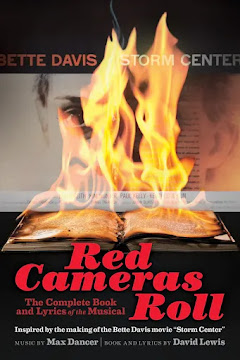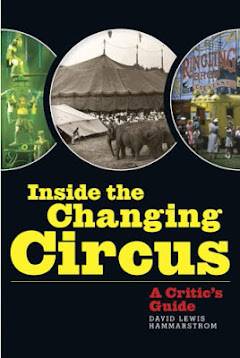How many people saw your circus last week, last year? How are we really to know? We hear talk and rumors, some of which may be tainted by sour grapes or fan worship. We go and see for ourselves. And these days, to see is to feel a sadness that so few patrons are in the seats. Big Apple Circus is surely an exception -- they claim to have seated a record 575,000 people last year. Ditto, I assume, for UniverSoul. Ringling? Likely not. Of course these are impressions, which is all we have to go on. Unlike virtually all other forms of entertainment, from CD sales to movie tickets sold, under the big tops attendance figures remain a mystery.
 The Billboard once did a fairly professional job in reporting on the size of the houses, as evidenced above. Eye ball accounts or show-generated claims produced rough estimations: Quarter house, near-full, half house, straw house. And back then, I recall usually seeing at least half of the seats occupied; I understood "half house" to be the average turnout needed in order to stay in the black.
The Billboard once did a fairly professional job in reporting on the size of the houses, as evidenced above. Eye ball accounts or show-generated claims produced rough estimations: Quarter house, near-full, half house, straw house. And back then, I recall usually seeing at least half of the seats occupied; I understood "half house" to be the average turnout needed in order to stay in the black.Evidently, not so any longer. Some circuses today appear to be possibly surviving on as few as 25% of the seats filled on average. Of course, such a viable new paradigm was made infinitely possible back in the 70s when boiler room operations pitched thousands of tickets to merchants under the guise of "charity" that mostly ended up in waste baskets. When I’ve seen Chimera, Vargas, Carson and Barnes, Cole in recent years -- even Ringling in Oakland -- I would probably have erred on the side of kindness by claiming I saw a solid one-third house.
Following the demise of the Billboard's circus coverage, no other publication took up the cause of reporting on business trends. Circus Report was the most likely candidate, but its founder Don Marcks did not take up the mantle. Don called me often and we spent hours on the phone before and during the first years of its publication discussing so many things, I wish I had pushed the idea of his seeking out attendance reports from the numerous fans around the country who sent him reviews (virtually all rosy) and news bits. I'm not sure that we ever discussed this subject. It would have made Circus Report much more vital. But Don was easily rattled by circus owners calling up to complain about perceived slights, and so he edited like a good circus fan.
Although I could be wrong, I don't believe the current Circus Report editors attempt to divulge actual attendance figures, either. Too unpleasant, I assume. This only serves to insulate the profession from its own failures. In the act of fatuous cheer leading, nobody is served.
Enter the tell-all bloggers: Last season there was for a time one soul sending out audience head counts on one circus, and that soul was, ironically, working for the circus itself. Ben Trumble, who held the position (another odd irony) of "media relations" for Kelly-Miller during part of its tour, blogged about big crowds and no crowds on his A Mudshow Season blog. He even at times questioned management's booking strategies. He is no longer with the show as far as I know, and his blog has been dormant since September 11. Circuses may eventually, I imagine, mandate certain restraints on boggers who sign contracts to work for them.
So, what can be said of the season just past?
It was probably worse than the season before. In a refreshing display of candor, when Nancy Gaona answered my mid-season phone call to the Carson and Barnes office in Hugo, her spin-free answer to my question concerning ticket sales drove head-first right to the point: “Down every year. Down. Down. Down.”
Here are two shows about which I have a few specifics:
Circus Vargas. Surfing the net, I came across a contract they have signed with a Southern California venue, which included this: “expected attendance: 300-500 per performance.” Their tent seats 1,500.
Kelly Miller: Based on a statement that show manager Jim Royal made to The Oklahoman, the show pulled in “about a quarter of a million people" last year. My rough calculations came up with an average house of about 40%. I ran this by Royal and he confirmed my figures a “reasonable estimate.”
There is a promising streak of sunshine on the Kelly Miller lot -- a dramatic, 30% increase in business from the 2007 tour, up from 190,000. That’s a formidable jump, and it should embolden John Ringling North II as he heads into his third season as a circus owner and producer.
Overall, why such sluggish business? Are big tops doomed? I’ll address this soon in my Recipe for Revival.






















4 comments:
Percentage of seats filled isn't always an accurate metric. Depends on what the expenses are for the show. For example, perhaps Circus A sits in a shopping center in LA for a week and they're lucky to sell a hundred tickets on some weekdays -- but then they sell out a couple shows on the weekend (after payday.) That circus may be framed to turn a profit on those three or four or five well attended shows around pay day. Everything else, putting up the tent, sitting on the lot, the poor attended shows generating a little word of mouth. Thoses things just announced to the target audience that the show was in town at a particular location. They can do four shows or eight shows with nobody in the stands. They can stay dark for a couple days -- it's all about knowing when their audience gets paid, knowing that their audience knows that they're there. They could sell 30% of their total seats over the course of 2 weeks and still turn of a profit under some circumstances.
"under some circumstances." might you be thinking of a high-powered boiler room operation that sells tons of tickets (under the guise of charity to merchants) that end up in waste baskets? please do tell...
David. I think there was a real silver ling to '08. Lets consider what odds shows were facing. Markets like Florida, Michigan, parts of Indiana, and much of California were reeling under foreclosures and declining home values even before the season started. Fuel hit $5 a gallon for diesel by July. And the entire US economy was in recession during the summer and autumn. Despite all of that Trey Key did good business with Culpepper in the early season with careful routing, then strong business in the Mountain West. The Byrds finished well with Carson & Barnes in southern California and enjoyed great success indoors after the tent season. Jim Royal and Mr. North continue to build a remarkable show and did fantastic business in MA in the Boston suburbs -- the heart of Cole Bros territory -- proving that a good circus can still find an audience in new territory.
2009 will be tough. Fuel prices should be way down, but consumer spending is almost below the radar. Unemployment is way up. Circus however remains a great bargain, and tent shows are really no more expensive than a trip to the multiplex where a bad movie still sports a ticket price of almost ten bucks and the corn or a drink another six. Single biggest problem at the moment may be the continued tightness in the credit markets making it tough to finance eqipment etc.
Ben
Good to hear from Ben! A trouper with keen insight. We'd be interested to hear about your plans for '09.
Post a Comment